Abstract
In studying "hemorrhagic necrosis" of tumors produced by endotoxin, it was found that the serum of bacillus Calmette--Guerin (BCG)-infected mice treated with endotoxin contains a substance (tumor necrosis factor; TNF) which mimics the tumor necrotic action of endotoxin itself. TNF-positive serum is as effective as endotoxin itself in causing necrosis of the sarcoma Meth A and other transplanted tumors. A variety of tests indicate that TNF is not residual endotoxin, but a factor released from host cells, probably macrophages, by endotoxin. Corynebacteria and Zymosan, which like BCG induce hyperplasia of the reticulo-endothelial system, can substitute for BCG in priming mice for release of TNF by endotoxin. TNF is toxic in vitro for two neoplastic cell lines; it is not toxic for mouse embryo cultures. We propose that TNF mediates endotoxin-induced tumor necrosis, and that it may be responsible for the suppression of transformed cells by activated macrophages.
Full text
PDF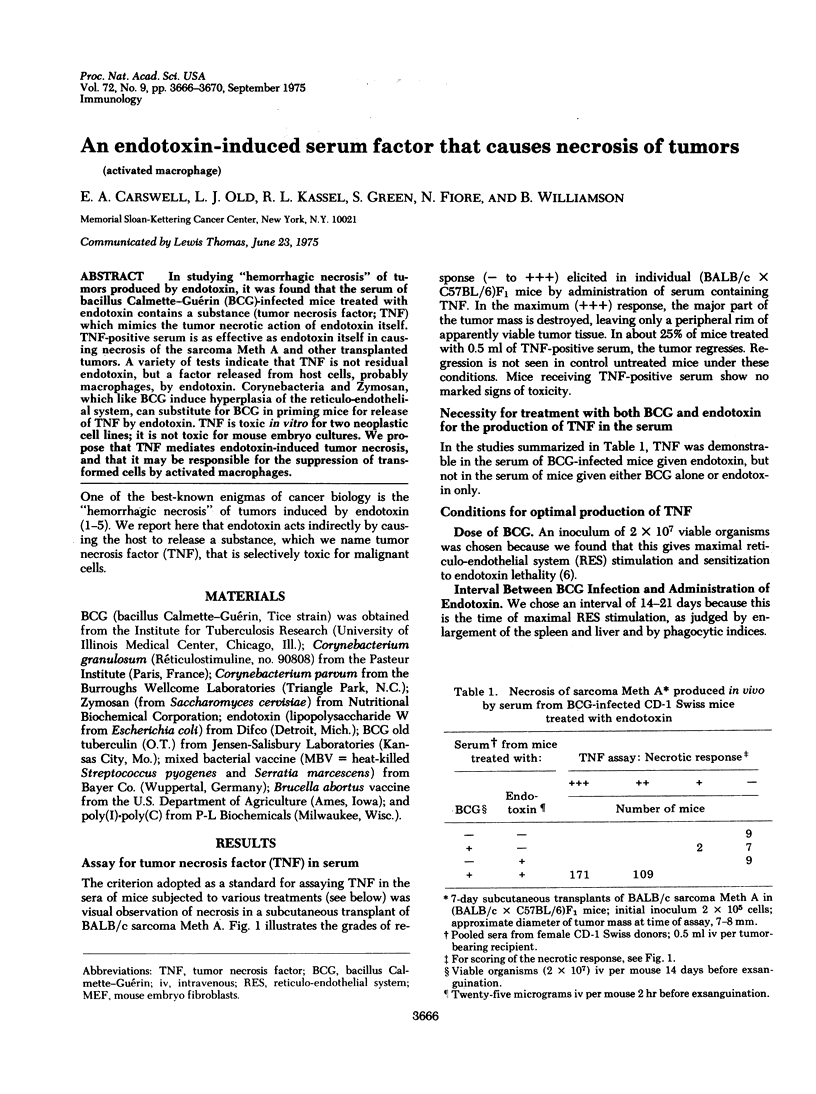
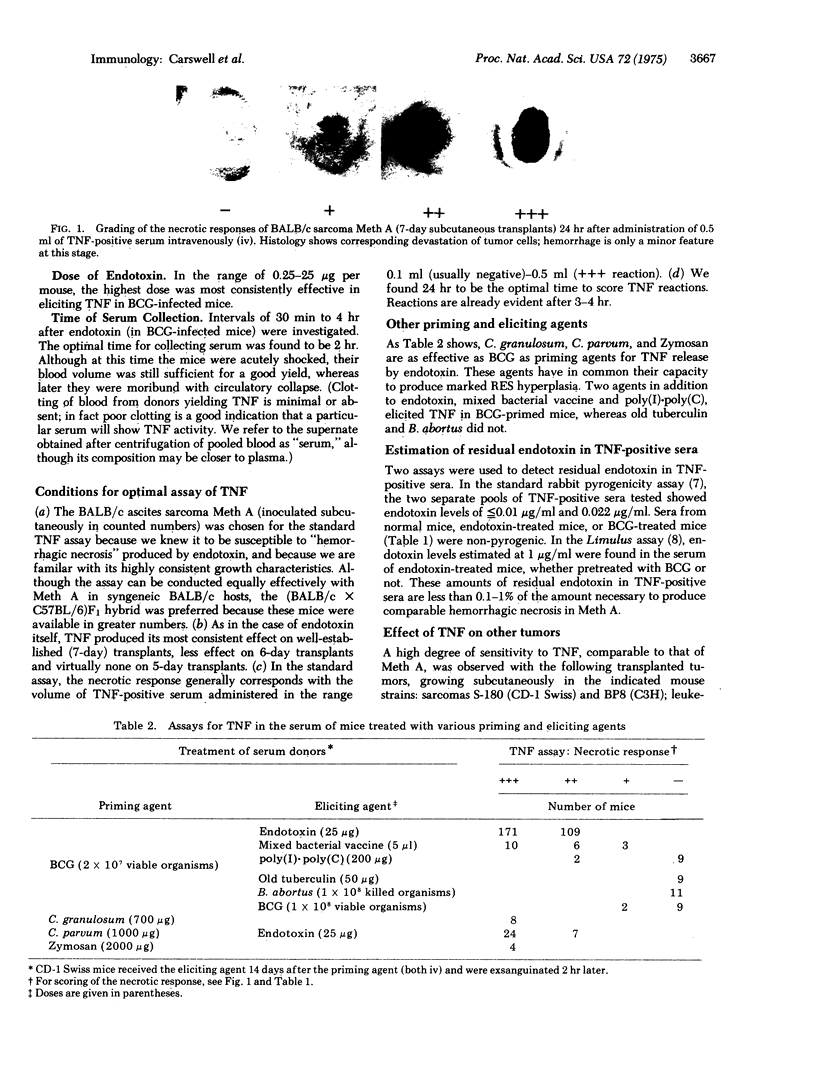
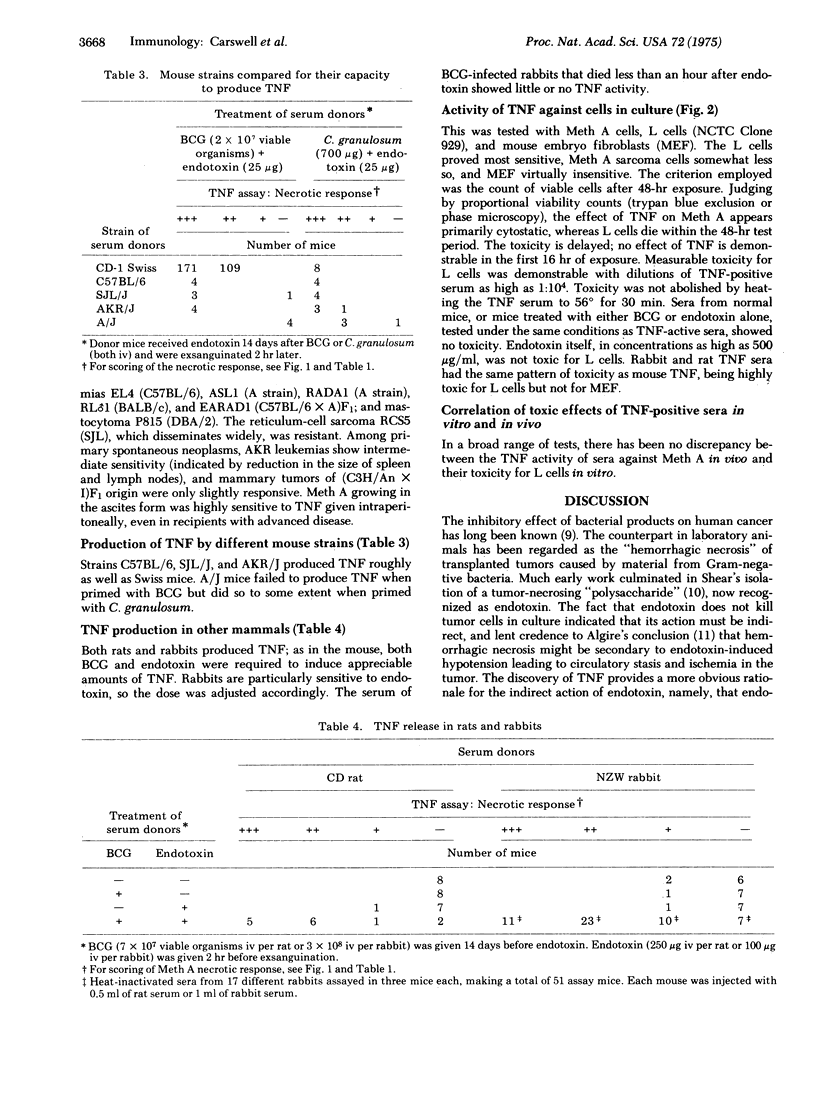
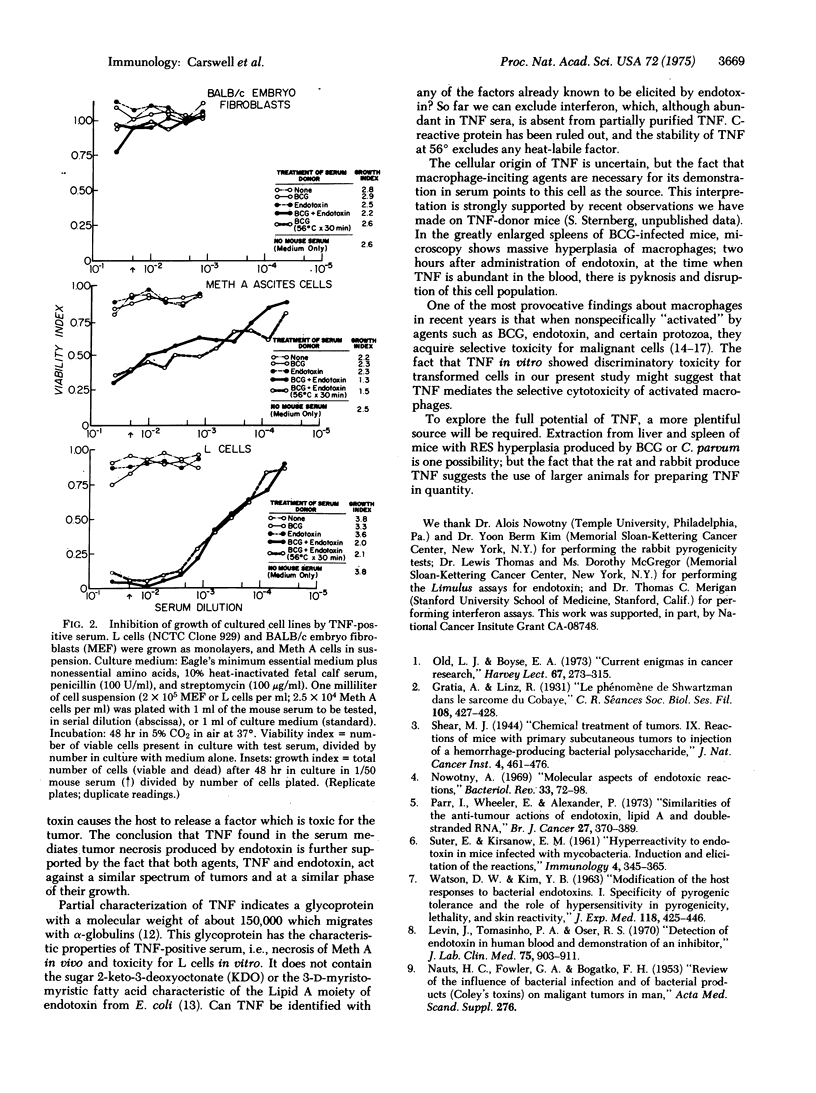
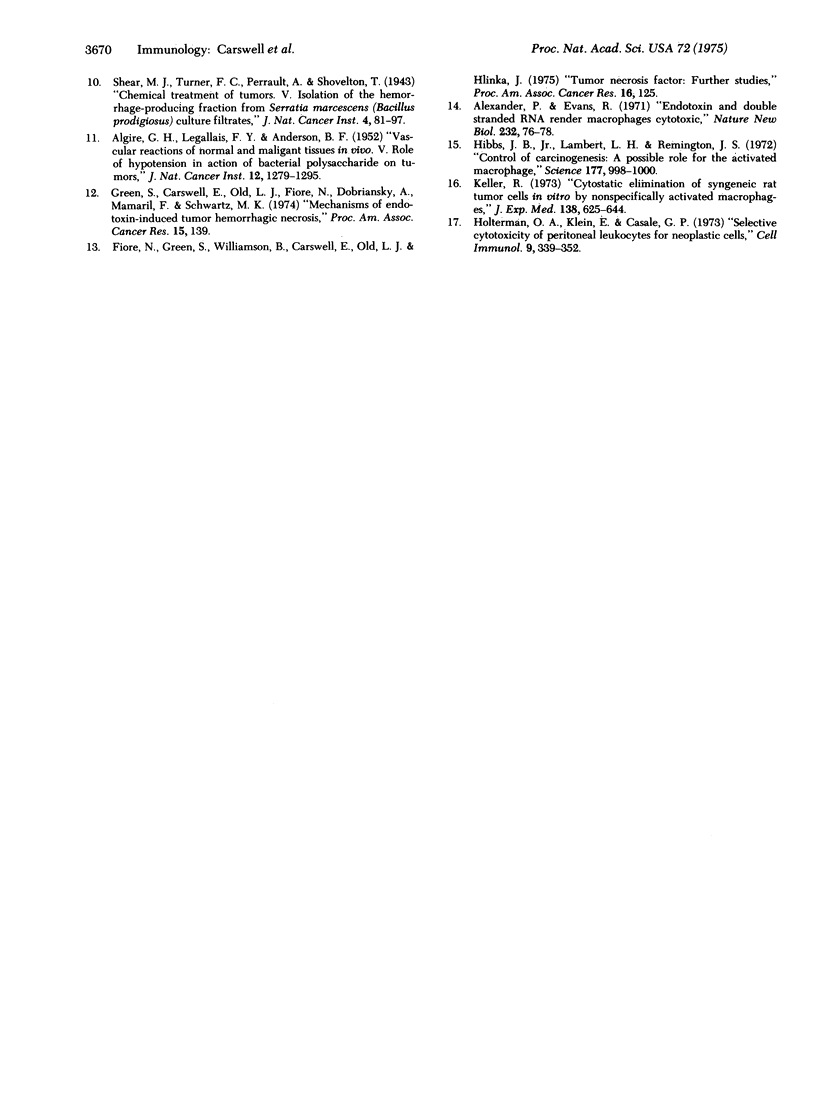
Images in this article
Selected References
These references are in PubMed. This may not be the complete list of references from this article.
- ALGIRE G. H., LEGALLAIS F. Y., ANDERSON B. F. Vascular reactions of normal and malignant tissues in vivo. V. The rôle of hypotension in the action of a bacterial polysaccharide on tumors. J Natl Cancer Inst. 1952 Jun;12(6):1279–1295. [PubMed] [Google Scholar]
- Alexander P., Evans R. Endotoxin and double stranded RNA render macrophages cytotoxic. Nat New Biol. 1971 Jul 21;232(29):76–78. doi: 10.1038/newbio232076a0. [DOI] [PubMed] [Google Scholar]
- Hibbs J. B., Jr, Lambert L. H., Jr, Remington J. S. Control of carcinogenesis: a possible role for the activated macrophage. Science. 1972 Sep 15;177(4053):998–1000. doi: 10.1126/science.177.4053.998. [DOI] [PubMed] [Google Scholar]
- Holtermann O. A., Klein E., Casale G. P. Selective cytotoxicity of peritoneal leucocytes for neoplastic cells. Cell Immunol. 1973 Dec;9(3):339–352. doi: 10.1016/0008-8749(73)90049-x. [DOI] [PubMed] [Google Scholar]
- Keller R. Cytostatic elimination of syngeneic rat tumor cells in vitro by nonspecifically activated macrophages. J Exp Med. 1973 Sep 1;138(3):625–644. doi: 10.1084/jem.138.3.625. [DOI] [PMC free article] [PubMed] [Google Scholar]
- Levin J., Tomasulo P. A., Oser R. S. Detection of endotoxin in human blood and demonstration of an inhibitor. J Lab Clin Med. 1970 Jun;75(6):903–911. [PubMed] [Google Scholar]
- Nowotny A. Molecular aspects of endotoxic reactions. Bacteriol Rev. 1969 Mar;33(1):72–98. doi: 10.1128/br.33.1.72-98.1969. [DOI] [PMC free article] [PubMed] [Google Scholar]
- Old L. J., Boyse E. A. Current enigmas in cancer research. Harvey Lect. 1973;67:273–315. [PubMed] [Google Scholar]
- Parr I., Wheeler E., Alexander P. Similarities of the anti-tumour actions of endotoxin, lipid A and double-stranded RNA. Br J Cancer. 1973 May;27(5):370–389. doi: 10.1038/bjc.1973.45. [DOI] [PMC free article] [PubMed] [Google Scholar]
- SUTER E., KIRSANOW E. M. Hyperreactivity to endotoxin in mice infected with mycobacteria. Induction and elicitation of the reactions. Immunology. 1961 Oct;4:354–365. [PMC free article] [PubMed] [Google Scholar]
- WATSON D. W., KIM Y. B. MODIFICATION OF HOST RESPONSES TO BACTERIAL ENDOTOXINS. I. SPECIFICITY OF PYROGENIC TOLERANCE AND THE ROLE OF HYPERSENSITIVITY IN PYROGENICITY, LETHALITY, AND SKIN REACTIVITY. J Exp Med. 1963 Sep 1;118:425–446. doi: 10.1084/jem.118.3.425. [DOI] [PMC free article] [PubMed] [Google Scholar]



